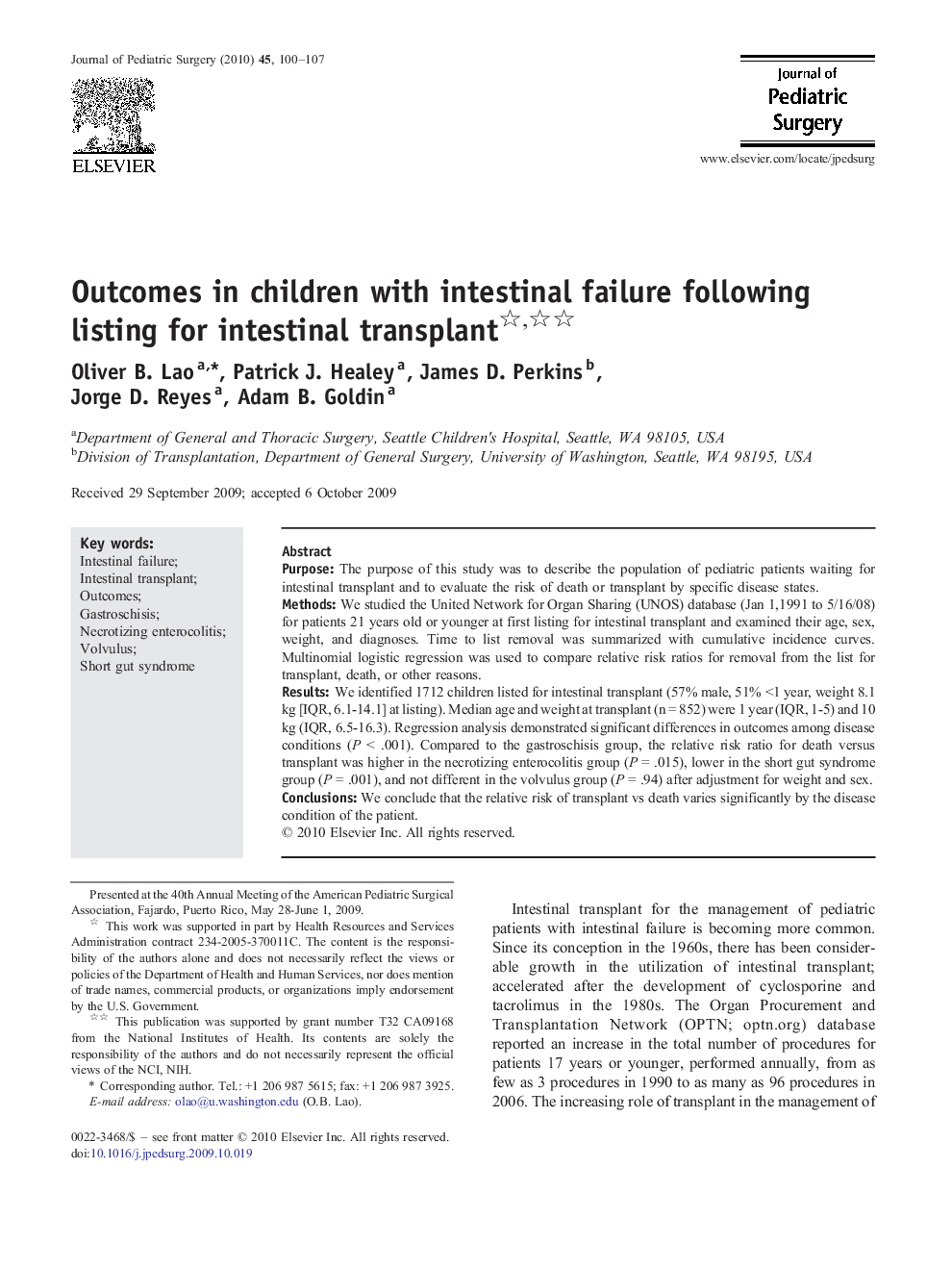| Article ID | Journal | Published Year | Pages | File Type |
|---|---|---|---|---|
| 4158800 | Journal of Pediatric Surgery | 2010 | 8 Pages |
PurposeThe purpose of this study was to describe the population of pediatric patients waiting for intestinal transplant and to evaluate the risk of death or transplant by specific disease states.MethodsWe studied the United Network for Organ Sharing (UNOS) database (Jan 1,1991 to 5/16/08) for patients 21 years old or younger at first listing for intestinal transplant and examined their age, sex, weight, and diagnoses. Time to list removal was summarized with cumulative incidence curves. Multinomial logistic regression was used to compare relative risk ratios for removal from the list for transplant, death, or other reasons.ResultsWe identified 1712 children listed for intestinal transplant (57% male, 51% <1 year, weight 8.1 kg [IQR, 6.1-14.1] at listing). Median age and weight at transplant (n = 852) were 1 year (IQR, 1-5) and 10 kg (IQR, 6.5-16.3). Regression analysis demonstrated significant differences in outcomes among disease conditions (P < .001). Compared to the gastroschisis group, the relative risk ratio for death versus transplant was higher in the necrotizing enterocolitis group (P = .015), lower in the short gut syndrome group (P = .001), and not different in the volvulus group (P = .94) after adjustment for weight and sex.ConclusionsWe conclude that the relative risk of transplant vs death varies significantly by the disease condition of the patient.
